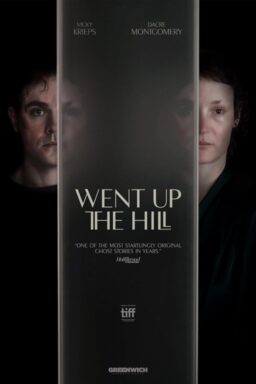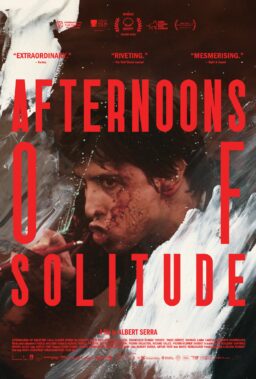Fatigue has nestled in here at Park City. As the second week
ambles onward, the festival becomes increasingly quiet. Those still standing
are out of breath, exasperated, ready to go home and take a break from watching
movies. However, this foreseen, but still unwelcomed enervation didn’t prevent
this writer from experiencing fascinating, enriching films. It also did not
inhibit me from watching some bad ones.
We begin with “Mistress
America,”the latest from Noah
Baumbach and his muse/life-partner Greta Gerwig. In the vein of Whit Stillman,
the film chronicles the first year of lonely college freshman Tracy (Lola
Kirke). Bored by the liberal arts university she’s attending, and disenchanted
with most fellow students she comes into contact with, Tracy flocks to Brooke (Gerwig),
her soon-to-be stepsister living in downtown New York City.
Brooke, nearing 30, is adventurous, spontaneous, and full of
energy—subverting what is expected, the adult revitalizing the youth. Through
Gerwig’s impetuous creation, Tracy blossoms. Determined to pen a short story
that would grant her entrance into an elite, on-campus literary coterie, our
protagonist writes what she sees. And what she sees is Brooke’s messy life
spiraling out of control. Fortunately for Tracy, Brooke’s mishaps and blundered
opportunities provide her with plenty of fodder for her burgeoning literary
career.
As Tracy lives vicariously through Brooke, we too find ourselves
endlessly searching for a character to latch onto. In the past, Baumbach has
filled the margins with acerbic, bookish, but genuine human beings. “Mistress
America” only offers up the first two
characteristics, forcing the viewing to look for something that’s not there: heart. Like a Howard Hawkes screwball
comedy, Baumbach writes crackling, witty dialogue, replete with one-liners
bound to elicit laughter. But there’s little else to grapple with here. Unlike “Kicking
and Screaming” and “The Squid and the
Whale,” there’s little sense that we’re
watching people on screen—just sketches; scenarios with thinly drawn
characters.

Similarly suffering from mediocre characters is “Z for Zachariah,” a film that picked up droves of buzz upon its premiere. Since that
first screening I’ve attempted to wrap my head around this film, and the people
who so ardently support it. Directed by the man behind “Compliance,” Craig
Zobel returns to Park City with a theological tale of post-apocalyptic love.
Ensnared in a carnal triangle, Caleb (Chris Pine) and Loomis (Chiwetel Ejiofor)
are duking it out for the affection of Ann (Margot Robbie). With seemingly no
other life forms left on the planet, the triumvirate of unbelievably attractive
specimens is tasked with paving the future. But will they be able to channel
their energy on creating a new life, or will the lure of Ann prove to be too
distracting? Is this an Adam & Eve story reworked for modern times? Will
these hypothetical questions ever come to an end? Zobel posits these inquiries
with little subtlety, deftly crating a string of shopworn characters. Unfortunately,
there isn’t a beat, turn, or plot development that one can’t foresee miles
ahead.

But as “People, Places,
Things” proves, sometimes there’s
nothing inherently wrong with predictability. For 85 minutes, writer/director
James C. Strouse’s third feature is as harmless, endearing, and sweet of a
movie I’ve seen at Sundance. At the center of this charming confection is Jemaine
Clement, a newly single graphic novelist coping with the absence of his wife,
the growth of his two little girls, and a class of mostly uninspired students.
Serving as a beacon of hope is Kat (Jessica Williams), a burgeoning cartoonist
who’s a fan of Will’s work and wishes to set him up with her smart, sexy mother
(Regina Hall).
On the page, Strouse’s film shouldn’t not work: it’s overly
sentimental, wrapped in cliché, and wholly unoriginal. And yet none of that
seems to really matter. The charm of Clement and company is too powerful to
ignore. There’s an unabashed kindness to “People, Places, Things” that most
would pejoratively describe as a typical “Sundance” movie. But there’s
something to this story of a father rebuilding a new life for himself that
connects.

Directly following “People, Places, Things” was Evan Johnson and
Guy Maddin’s “The Forbidden Room,”
which lands on the opposite end of the spectrum from Strouse’s lighthearted
trifle. Formally and intellectually challenging, Johnson and Maddin’s latest
opus has the feel of a film excavated from the grave of Charlie Chaplin or
Buster Keaton. Dubbed the ultimate “epic phantasmagoria,” the virtuoso director
duo employs a Russian nesting doll structure to tell their complex narrative
within a narrative.
The plot of this film, which includes romance, flapjacks, and
Janus, is as difficult to describe as any. It’s also unlike any film I’ve
experienced in my life. Such is the joy of Maddin’s work. A critical response
should be rendered irrelevant. The rating should be N/A. I don’t know exactly
what unfurled for 130 minutes during “The Forbidden Room,” but I do know I’m
glad this piece of Cinema exists.

Last up on the docket was “Listen
to Me, Marlon,” which is arguably the best film I’ve seen here in Park
City. Soon to be premiering on Showtime, the lyrical documentary offers up a
portrait of artist Marlon Brando, as told by himself. Eschewing typical doc
tropes, the only talking head in Stevan Riley’s masterwork is Brando through a digitally
animated 3D rendering based on facial scans.
Lodged inside a bunker outside his home, Brando had roughly “300
hours” of private recordings stashed away. The film is truly a feat of archival
work as Riley cobbles together the most intimate bits from Brando’s sessions. Listening
to Brando lull himself into self-hypnosis, working through his myriad of
psychological issues, is painful. We’re an audience to his descent into madness—his
life unraveling before our eyes. It’s clear that Brando, much like us, is
desperately searching for equanimity. To stop time, just for a moment, and sit
peacefully—love someone or something other than himself. Brando’s filmography
always suggested a troubled man away from the silver screen, but “Listen to Me, Marlon,” tragically elucidates that. As the film inches onward, Riley dives
deeper and deeper into the dark recesses of Brando’s brain. It’s as revealing,
bold, and provocative as any memoir I’ve read. This is Brando on Brando. Telling, uninhibited and uninterrupted.












